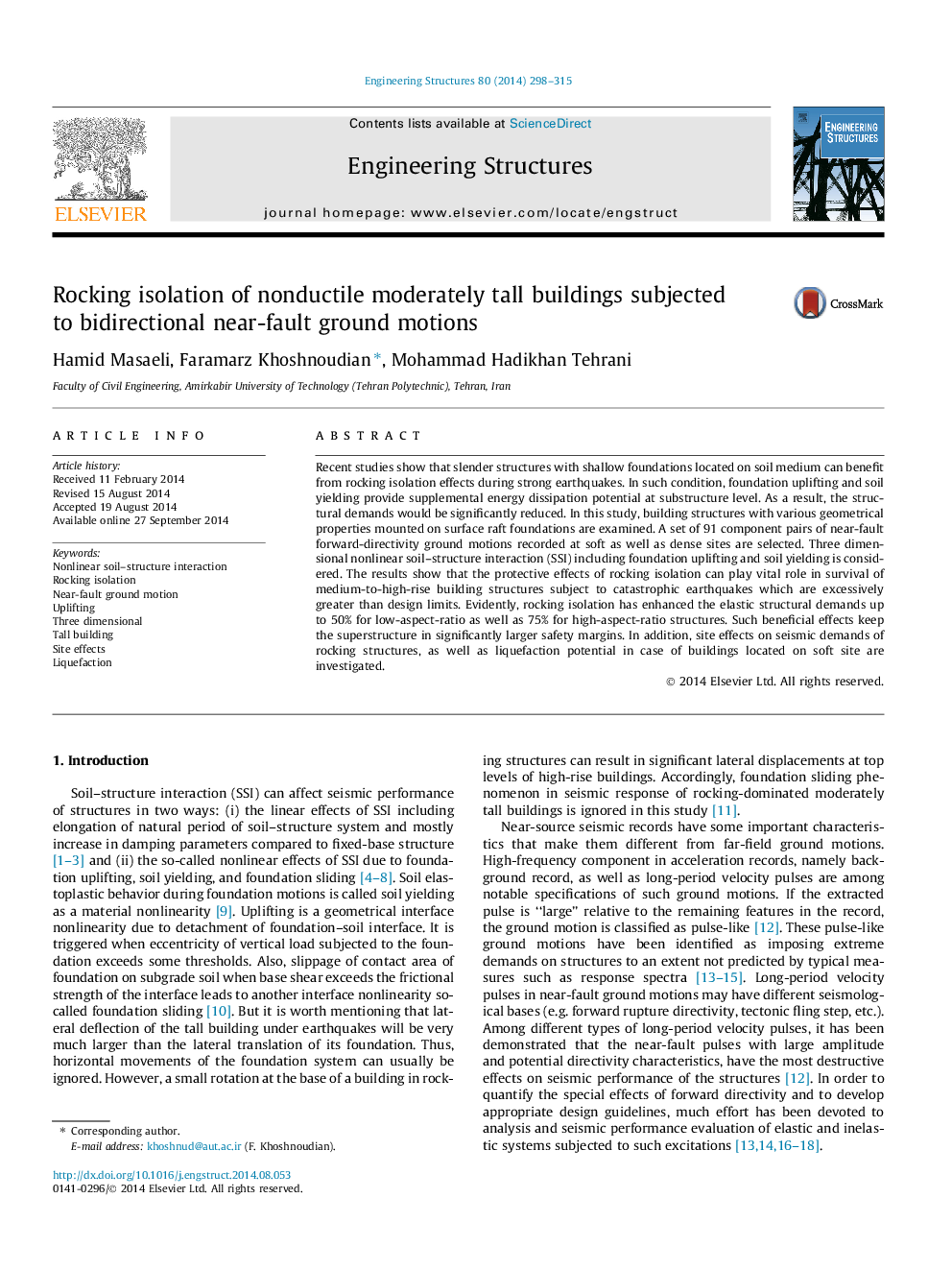| Article ID | Journal | Published Year | Pages | File Type |
|---|---|---|---|---|
| 266371 | Engineering Structures | 2014 | 18 Pages |
•Foundation uplifting and soil yielding subject to biaxial near-fault ground motion are studied.•Rocking isolation concept and application to foundation design.•Consequent inelastic foundation tilting is compared with those of the current design codes.•Site effect on seismic response of rocking structures.•Liquefaction potential of the soft site subjected to bidirectional near-fault ground motions.
Recent studies show that slender structures with shallow foundations located on soil medium can benefit from rocking isolation effects during strong earthquakes. In such condition, foundation uplifting and soil yielding provide supplemental energy dissipation potential at substructure level. As a result, the structural demands would be significantly reduced. In this study, building structures with various geometrical properties mounted on surface raft foundations are examined. A set of 91 component pairs of near-fault forward-directivity ground motions recorded at soft as well as dense sites are selected. Three dimensional nonlinear soil–structure interaction (SSI) including foundation uplifting and soil yielding is considered. The results show that the protective effects of rocking isolation can play vital role in survival of medium-to-high-rise building structures subject to catastrophic earthquakes which are excessively greater than design limits. Evidently, rocking isolation has enhanced the elastic structural demands up to 50% for low-aspect-ratio as well as 75% for high-aspect-ratio structures. Such beneficial effects keep the superstructure in significantly larger safety margins. In addition, site effects on seismic demands of rocking structures, as well as liquefaction potential in case of buildings located on soft site are investigated.
